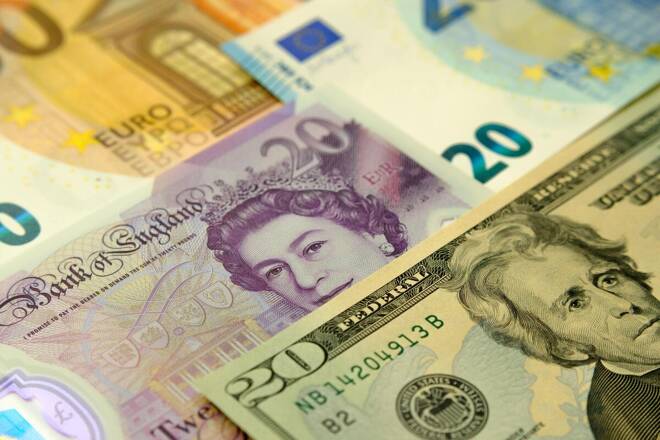Advertisement
Advertisement
GBP to USD Forecast: Bulls Eye $1.28 on Hawkish BoE Outlook
By:
As the British Pound navigates FOMC fallout, the UK's resilient economy and wage trends become focal points in GBP to USD forecasts.
In this article:
Highlights
- GBP to USD gains 0.24% on Wednesday, closing at $1.27310 after a day of significant fluctuations.
- Softer UK inflation rate, but UK wage growth may fuel ongoing inflationary pressures.
- US jobless claims could challenge softer labor market theory after the FOMC minutes left the door open to more rate hikes.
Overview
On Wednesday, the GBP to USD gained 0.24% to wrap up the day at $1.27310. A mixed session saw the GBP/USD fall to an early low of $1.26871 before rising to a high of $1.27661. However, the FOMC meeting minutes reversed gains from earlier in the session.
It is a quiet Thursday for the GBP to USD. There are no UK economic indicators for investors to consider. The lack of UK economic indicators will leave the latest UK wage growth figures and CPI Report to resonate.
While the UK annual inflation rate has softened considerably since the peak of 11.1% in October, wage growth could continue to fuel demand-driven inflationary pressures. A resilient UK economy favors a more hawkish BoE policy outlook. The UK economy expanded by 0.5% in June and 0.2% in the second quarter.
While the UK economic calendar is silent, no Bank of England Monetary Policy Committee Members are on the calendar to speak today, leaving chatter with the media to influence.
US Jobless Claims to Fuel Fed Speculation
Philly Fed Manufacturing Index numbers and US jobless claims will also provide direction. A fall in jobless claims would question the theory of a softer US labor market and support hawkish Fed bets.
We expect the jobless claims to trump the Philly Fed Manufacturing data.
It is worth noting that the manufacturing sector numbers are unlikely to influence the Fed. The manufacturing sector accounts for less than 30% of the US economy and is unlikely to dictate sentiment toward Fed monetary policy. In contrast, tight labor market conditions support further Fed rate hikes to curb demand-driven inflation.
GBP to USD Price Action
Daily Chart
The Daily Chart showed the GBP to USD sat below the $1.2785 – $1.2862 resistance band. Looking at the EMAs, the GBP to USD sat below the 50-day EMA while holding above the 200-day EMA, sending bearish near-term but bullish longer-term price signals.
Looking at the 14-Daily RSI, 45.25 reflects bearish sentiment. The RSI signals a fall to sub-$1.2650 to bring the $1.2520 – $1.2440 support band into view. However, a GBP to USD move through the 50-day EMA would give the bulls a run at the $1.2785 – $1.2862 resistance band.
4-Hourly Chart
Looking at the 4-Hourly Chart, the GBP to USD hovers below the $1.2785 – $1.2862 resistance band. The GBP to USD also sits below the 50-day and 200-day EMAs, sending bearish near and longer-term price signals.
However, the 14-4H RSI reading of 50.32 reflects moderately bullish sentiment, with buying pressure outweighing selling pressure. Significantly, the RSI signals a move through the 50-day EMA to target the 200-day EMA and the $1.2785 – $1.2862 resistance band. Failure to move through the 50-day EMA would leave sub-$1.2650 and the $1.2520 – $1.2440 support band in play.
Today’s price action hinges on US economic indicators and market risk sentiment.
About the Author
Bob Masonauthor
With over 20 years of experience in the finance industry, Bob has been managing regional teams across Europe and Asia and focusing on analytics across both corporate and financial institutions. Currently he is covering developments relating to the financial markets, including currencies, commodities, alternative asset classes, and global equities.
Latest news and analysis
Advertisement
